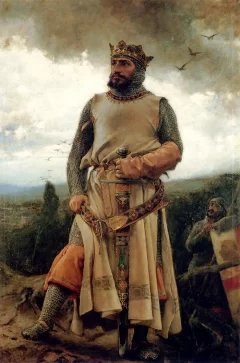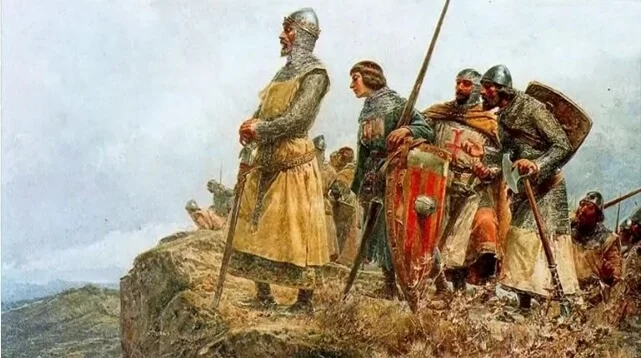Alfonso I: The Battler in Zaragoza
In our previous articles, we embarked on a journey through the history of the Taifa of Zaragoza. Now, we turn our focus to the pivotal Christian Reconquest of Zaragoza, led by the King of Aragon, Alfonso I, in 1118.
Zaragoza’s Taifa: The Pre-Reconquest Era
Throughout the 11th century, Zaragoza rose to prominence as the capital of a sovereign Muslim kingdom. By mid-century, this kingdom had not only solidified its power but also extended its reach towards the Levantine coast. However, as the century drew to a close, the hayib (the Muslim king of Saraqusta) found himself unable to resist the encroaching Aragonese from the north and the Almoravids from the south.
The Taifa kings adopted a survival strategy of paying parias (tributes) to the neighboring Christian kingdoms in exchange for border protection. Over time, this policy led to the emergence of an Almoravid faction favoring Zaragoza’s incorporation into the Almoravid Empire, primarily to alleviate the financial burden of the parias.
This faction called for Almoravid intervention, which resulted in the Almoravids seizing control of Zaragoza following the flight of the city’s last Taifa king, Abd Al-Malik.

The early years of the Aragonese kingdom
Ramiro, the eldest but illegitimate son of King Sancho III “The Great” of Pamplona, is widely recognized as the first king of Aragon, a title he inherited in 1035.
Upon the death of his brother Gonzalo, Ramiro further extended his reign by incorporating the counties of Sobrarbe and Ribagorza. In 1063, the mantle of leadership passed to his son, Sancho Ramírez.
In addition to inheriting the Aragonese throne, Sancho Ramírez was granted the kingdom of Pamplona by the Pamplonan nobility following the assassination of the previous Pamplonan king, Sancho IV Garcés. Sancho Ramirez embarked on a mission of southern expansion, conquering Graus, Monzón, and Ayerbe. During a pilgrimage to Rome, he pledged fealty to the Papacy for the Kingdom of Aragon, thereby securing pontifical legitimization for his crown. In 1094, the reins of power passed to Pedro I, Sancho Ramírez’s son.
Pedro I marked his reign with the conquest of Huesca after the Battle of Alcoraz in 1096. His death without heirs in 1104 paved the way for his brother, Alfonso I, to ascend to the Aragonese crown.

Alfonso I ‘The Battler’: The Architect of Zaragoza’s Christian Reconquest.
Born in 1073, Alfonso I was educated to be a feudal lord at the San Pedro de Siresa monastery in the Hecho valley. As the third son, it was not expected that he would ascend to the throne. However, the death of his brothers without male heirs led to his coronation in 1104.
Alfonso I married Urraca I, queen of León, in 1109, uniting the peninsula’s two Christian kingdoms. After several years of intervening in León to quell noble disputes, he divorced Urraca in 1114 and refocused his efforts on the conquest of the Muslim taifa of Saraqusta.

The Siege: The Pinnacle of Zaragoza’s Christian Reconquest
The Almoravid rule of Zaragoza was short-lived. In 1118, King Alfonso I initiated the city’s siege. The siege saw participation not only from the Aragonese but also Navarrese troops, as King Alfonso held the titles of both King of Pamplona and Aragon. The siege also attracted some Franks, motivated by the promise of spiritual benefits as per the council of Toulouse’s proclamation of a Christian expedition to liberate the city. The siege, lasting from May to December 1118, was marked by the use of imposing siege machines and, as historian Manuel Grau Montserrat suggests, was ultimately successful due to the besieged city’s hunger.



The Fall of Saraqusta
In 1118, Alfonso I The Battler negotiated Zaragoza’s surrender with prominent Muslims. The Aragonese king agreed that the Muslims could continue living in the city, provided they resided in the suburbs. Consequently, the Muslims established their Moorish quarter around the Alfóndiga square, now known as Plaza de Miguel Salamero, with the souk located where Azoque Street stands today.
The Christian reconquerors, including Aragonese, Navarrese, and Occitans, occupied the city’s walled center. The Main Mosque of Saraqusta was used as the foundation for the cathedral now known as La Seo.
To attract more Christians to the city, the Fuero of Zaragoza (1119) was promulgated, granting the status of infanzón to the city’s new inhabitants. They were also granted the Privilege of the Twenty (1129), allowing Zaragozans to “capture and punish the wrongdoer” who had inflicted harm on them.
Between 1124 and 1126, Alfonso I led an expedition against the south of Al Ándalus, convincing about ten thousand Mozarabs (Christians living in Muslim territory) to relocate to Zaragoza or other parts of his kingdom, where they could live under a king who shared their Christian faith.

Bibliographic References
Dbe.rah.es. 2022. ‘Abd al-Malik ‘Imad al-Dawla | Real Academia de la Historia. [online] Available at: <https://dbe.rah.es/biografias/7472/abd-al-malik-imad-al-dawla> [Accessed 24 March 2022].
Dbe.rah.es. 2022. Alfonso I de Aragón | Real Academia de la Historia. [online] Available at: <https://dbe.rah.es/biografias/6347/alfonso-i-de-aragon> [Accessed 28 March 2022].
Grau Monserrat, M., 1958. Contribución al estudio del estado cultural del valle del Ebro en el siglo XI y principios del XII. [Barcelona]: [Real Academia de Buenas Letras de Barcelona].
Castro, J. R. & Institución Príncipe de Viana. (1946). La reconquista de las tierras del Ebro. Institución Príncipe de Viana

